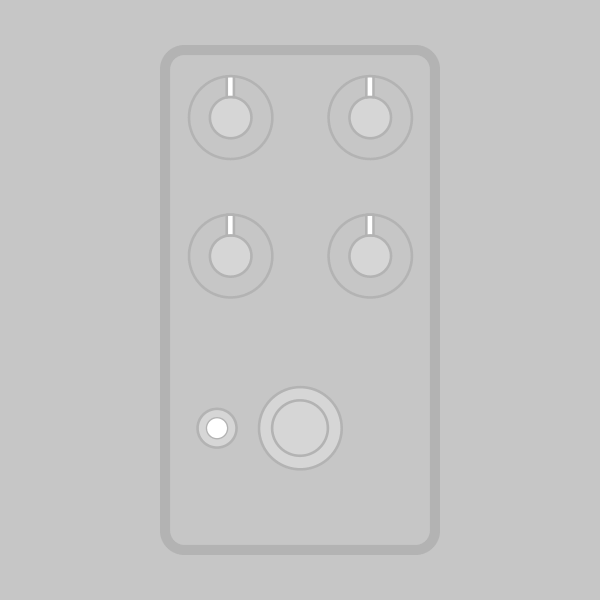
The Epsilon Silicon Fuzz is based on the 1970 version of the Dallas-Arbiter Fuzz Face, the first to use uses NPN silicon transistors. While Dallas had made the shift from germanium to silicon in 1969, the first versions used PNP transistors in a positive-ground arrangement just like the germanium version.
The Epsilon PCB includes a switchable pickup simulator at the input. The Fuzz Face was originally designed to connect directly to an electric guitar, and as a result it is notoriously picky about where it’s placed in the signal chain. If it’s fed a low-impedance signal (e.g. if there’s another pedal before it) then it loses much of its character.
The pickup simulator solves this problem by adding a transformer, resistor and capacitor to convert the source signal into the higher impedance that the Fuzz Face likes. This pickup simulator was invented by Jack Orman of AMZ and has been used in commercial pedals such as the Earthquaker Devices Erupter.
The Epsilon joins two other Aion FX projects also based on the Fuzz Face. The Proteus is based on the 1966 PNP germanium version of the pedal and includes a voltage inverter and the same pickup simulator. The Solaris is a hot-rodded version of the Proteus with 3 additional knobs.
The original 1970 Fuzz Face used BC108C transistors. These are extremely high-gain devices with an hFE (gain) spec of 420 to 800. They are still available from a few manufacturers such as Central Semiconductor or Multicomp. There are also some really good sounds to be had by experimenting with other types of transistors. Some low-gain options, e.g. a 2N3903 for Q1 and 2N3904 for Q2, provide a very different character that’s a little closer to the germanium version.